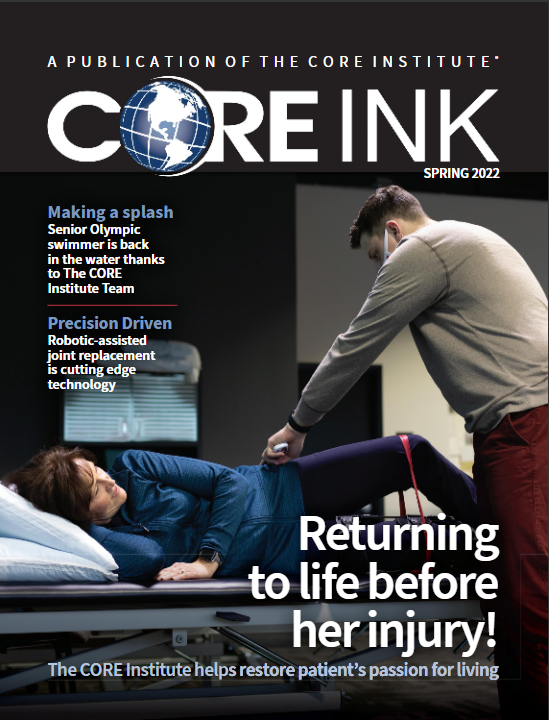A fellowship trained foot and ankle surgeon with The CORE Institute reports increased patient success when treating heel fractures with an implant.
With this new, minimally invasive technique, Kevin Anderson, MD, can help restore the heel’s stability and height without damaging the sensitive skin around the heel and side of the foot. Patients can also recover faster and return to work sooner.
“There are no big incisions in the area of the injury or in the area of the fracture,” Dr. Anderson said. “The fracture is reduced intra-focally, which means you’re reducing the fracture from the inside out.”
High-velocity fractures
Fractures of the calcaneus—the heel bone—are typically high-velocity fractures. Construction workers or roofers who fall from great heights or drivers who are involved in collisions commonly suffer calcaneal fractures. The challenge for orthopedists isn’t necessarily the break itself. While surgeons can repair the calcaneal fracture, even if it’s shattered into multiple pieces, the real challenge is an injury to the skin surrounding the heel.
“Traditionally, there would be a large incision outside the heel bone,” Dr. Anderson said of the old technique. “It’s very extensive and patients may have skin necrosis which is where the healthy tissue dies.”
Repair and recovery
Patients who might have their fractures repaired would instead suffer complications because the large incision site couldn’t heal. In addition to the fracture of the bone, the tissue also suffered a high-velocity injury. That additional trauma compounded the health and recovery issues while also resulting in practical concerns for patients: It’s hard to return to work on a construction site when you can’t stand.
With the technique that Dr. Anderson employs, only a 1 to 1.5 centimeter incision at the base of the heel is needed to insert the implant. Then, four tiny incisions on either side of the heel allow Dr. Anderson enough room to insert screws and stabilize the bone.
Dr. Anderson’s patients use a splint for two weeks post-surgery with no weight-bearing on the foot. They then move to a boot with similar weight-bearing restrictions for an additional four to six weeks. With the implant procedure, often they can begin to bear weight and return to normal activities sooner than the traditional procedure.
To schedule an appointment with one of our doctors, visit TheCOREInstitute.com/schedule-online-now/
SUBSCRIBE TO CORE INK NEWSLETTER
Sign up to receive stories and information from The CORE Institute, including expertise from our providers and news about the latest technology advancements helping our communities.

